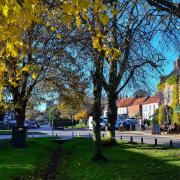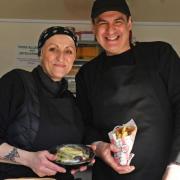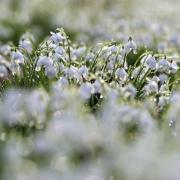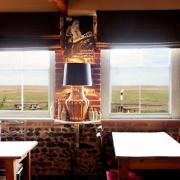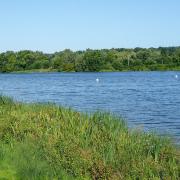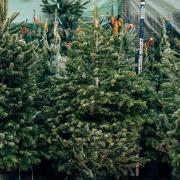If you want to see Dartmoor ponies, Dartmoor in Devon is a good place to be. The second best is Norfolk

The biggest collection of Dartmoor ponies outside Devon is happily grazing the green, green grass – and the invading vegetation – of the Norfolk Wildlife Trust (NWT) reserves.
The landscapes they roam were created over many centuries for or by farmed animals, and the pond-scattered, fen-fringed meadows, downs and heaths, the chalk grassland and Brecks, would disappear without grazing animals. The trust uses sheep, cattle and 163 ponies to help conserve 6,000 acres of open landscape.
Several times a week Ian Hodge checks the 40 ponies at the NWT Roydon Common reserve, near King’s Lynn. He knows each animal by name and has walked countless miles to ensure he has seen all of ‘his’ ponies on each visit.
All the trust’s grazing animals are checked daily by its grazing manager or dedicated volunteers like Ian.
Norfolk’s Dartmoor ponies keep down vegetation on reserves like Roydon Common and Buxton Heath, allowing creatures such as green tiger beetles, mottled grasshoppers and emperor moths to thrive.
“Our team of grazing animals is an essential conservation tool for NWT,” said grazing manager Tim Green. “The ponies play a very important role in managing NWT nature reserves by removing yearly vegetation growth and maintaining open habitats for wildlife. At NWT Buxton Heath the year-round pony grazing has seen a marked increase in the number of marsh helleborine orchids over the past few years.”
The grazing ponies are helping to preserve the meadows and heathland vital for birds such as bitterns, skylarks and stone curlews, butterflies like Norfolk’s famous swallowtails and flowers such as maiden pinks and orchids. Properly cared for, the ponies thrive outside all year round.

And do they miss the hills of home? “Having been bred on the moor, the hardy ponies are already well adapted – and happy – to live on coarse vegetation and in exposed areas,” said Tim. “They are therefore well suited to thrive on our Norfolk heathlands.”
Tim said the scheme not only helps conserve precious landscapes and wildlife, but is also helping to secure the future of endangered Dartmoor ponies, with the NWT working with the charitable Dartmoor Pony Heritage Trust to source its ponies. The 131 Dartmoor ponies graze some of the drier reserves such as heaths, while 32 Polish Konik ponies are ideal for wetlands such as fens and grazing marshes.
The Norfolk Wildlife Trust also has a ‘flying flock’ of sheep, which are moved around reserves to graze and help maintain grassland. This scheme began almost 30 years ago with the offer of five ewes. With many sites needing just a few animals for a little light grazing, it was the start of a flock which could be moved between reserves. A shepherdess with her own sheep looked after the new flock, gradually growing it. Today a grazing team looks after the pedigree Shetland and Black Welsh Mountain sheep, and a herd of British White Cattle, alongside its Dartmoor and Konik ponies – helped by six sheep dogs and two pups in training.
Out to graze
Eric, Domino, Jacki, Percy, Pip, Jack, Jason, Poppy, Dippy and Rea are just a few of the pony-powered grazing team which helps to look after six sites around the Broads National Park. The 30 Welsh and Konik ponies (the hardy breed from Poland thought to be closely related to the Tarpan, the original hardy floodplain horse of Europe) help maintain six fenland sites which provide a unique refuge for rare wildlife, some of which is found nowhere else in Britain.
See a herd of Konik ponies all year round on Buttle Marsh at the How Hill National Nature Reserve. Other ponies graze smaller sites in smaller groups, only spending the summer at some of the wilder and wetter areas of the northern Broads – returning to more sheltered fields near How Hill for the winter.

The little Welsh ponies are of the kind which still graze the wetlands of Wales and were once used as pit ponies. Today they are ideal to wander through sites with soft peat soils and delicate plants. The Broads also has two rescue ponies, Boston and Bella, who have been given drier, less challenging sites to graze.
More modern mowers are used too, and some areas of reed and sedge are still harvested commercially for thatch, but the ponies are particularly good at grazing around raised tussocks which would defeat machines.
“Ponies are selective grazers,” said Sue Stephenson, environment and design supervisor for the Broads National Park. “They choose to eat certain plants and generally prefer grasses and other fine-leaved species. On fens, this means that they will choose to eat reed, rushes and sedges, while avoiding the broad-leaved flowering plants that provide some of the fens’ botanical interest. The ponies are free-range and choose where they wish to eat, so some vegetation is eaten short, some is just nibbled and other areas are not eaten at all. This mosaic effect produces lots of different habitats, creating the right conditions for diverse plants and animals. While mowing machines are useful in other ways it is not easy to achieve this kind of discrimination with them.
“Horses and ponies are inefficient digesters, so they spend a lot of time eating – on average 18 hours out of 24. This means that they can get through considerable amounts of food! This is useful because fens are very productive but we also need to ensure that these sensitive sites are not over-grazed. This is why we use extensive grazing, with low numbers of animals so that the fen vegetation is grazed with a ‘light munch’.”




